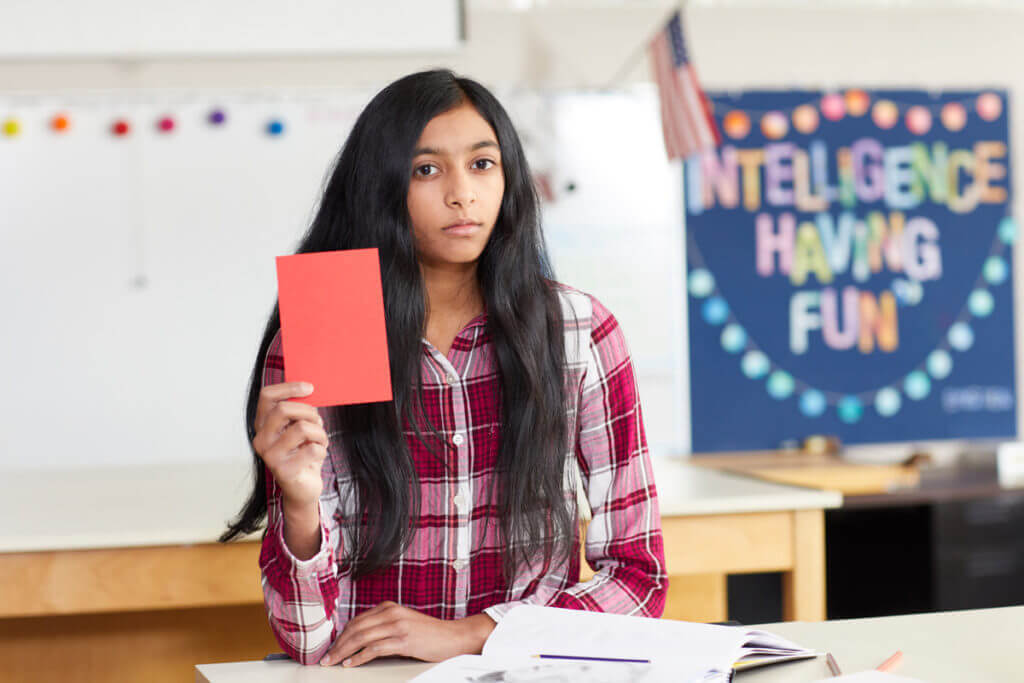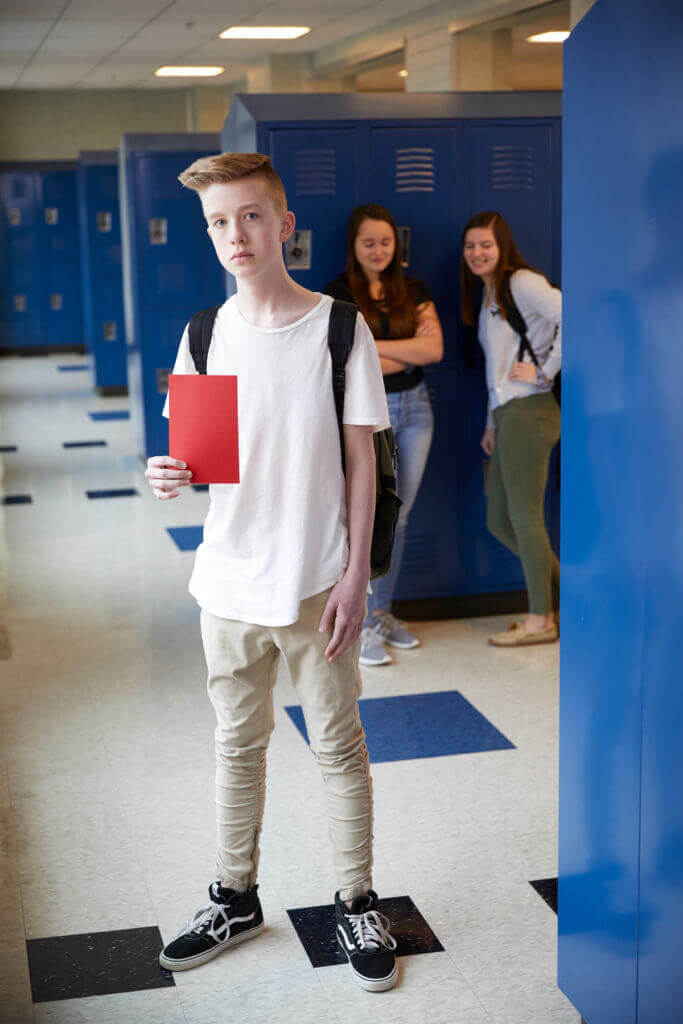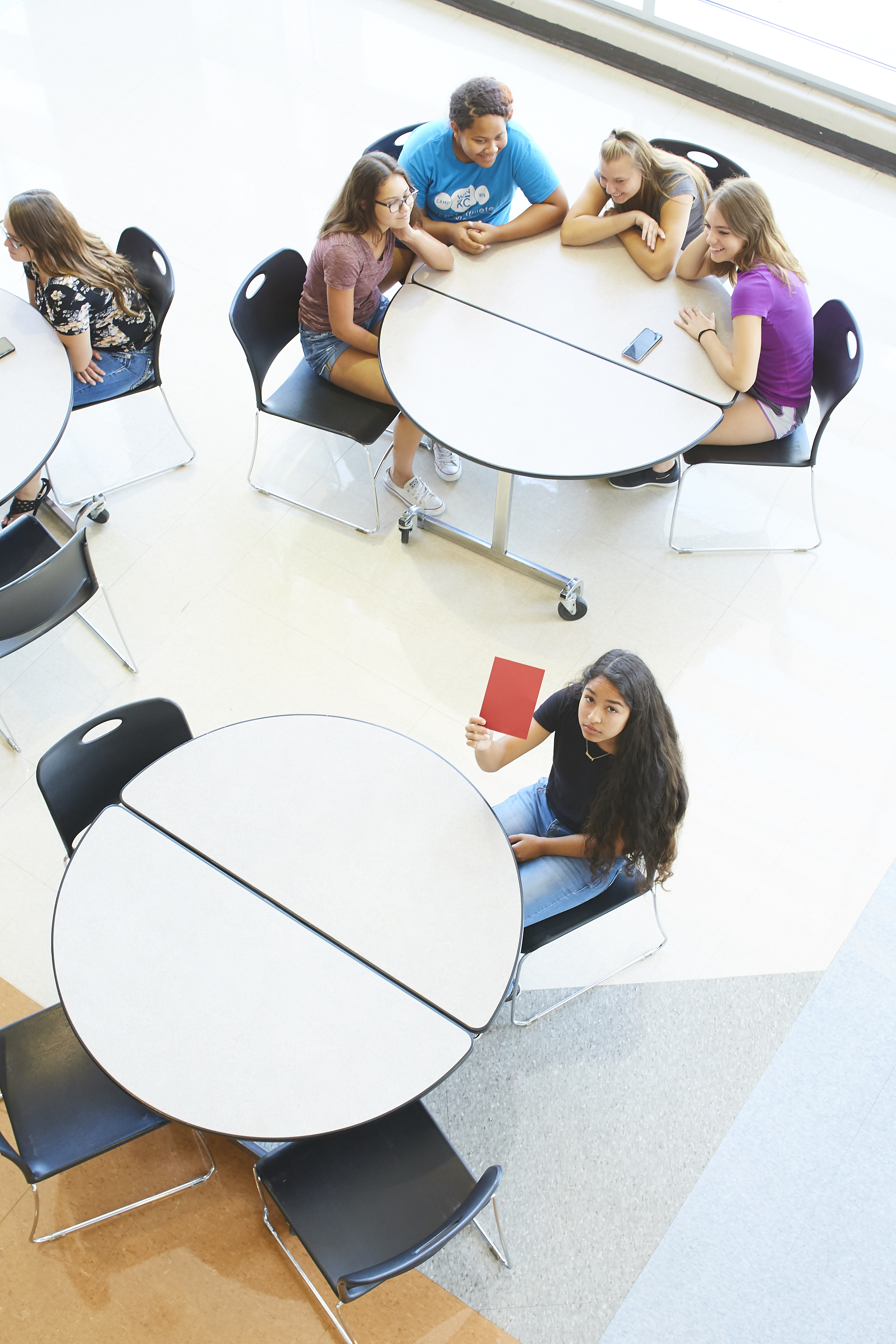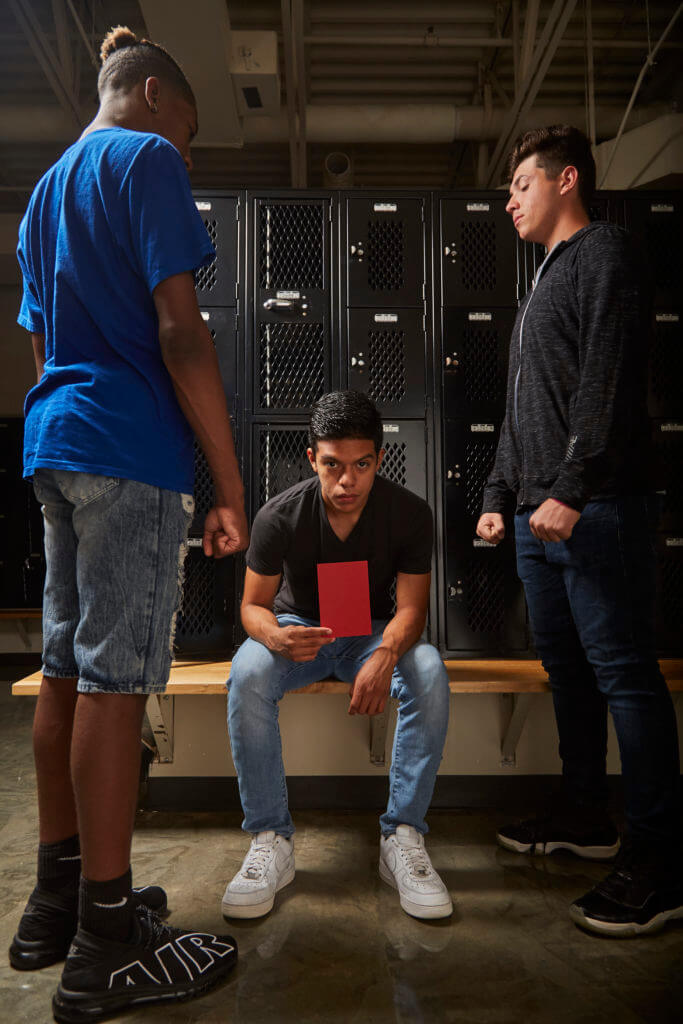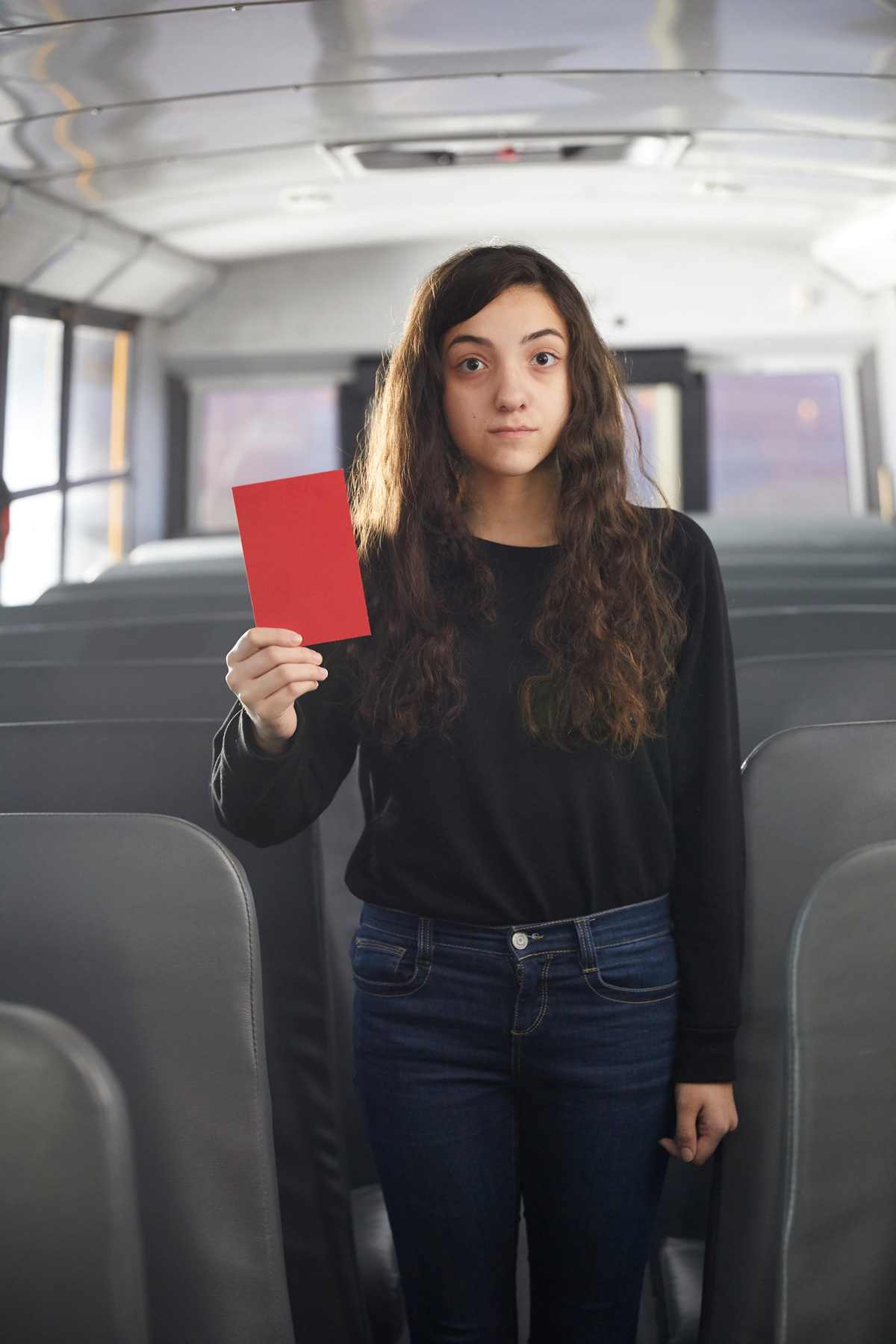Prevent Bullying
If you’re a kid who’s being bullied, you just hope it will stop. Or, you may see bullying happen and you don’t want to say anything because you’re afraid it will just make things worse. Unfortunately, ignoring the problem can make it worse. The best thing to do is to report it.
As a teacher or coach, sometimes you just don’t see bullying. After all, when kids are bullying one another, they don’t usually do it in front of adults. But every student, whether in the classroom, at a practice or in the game, has the right to be treated with respect, dignity and fairness. If a student brings a concern to you, don’t brush it off. Call it when you see it so bullying can be stopped in its tracks.
And as a parent, you may be the last to know that your kid is being bullied, but you can do something about it, too. Here are some tips from Red Card that can help you take a stand against bullying, no matter who you are.
Team up to stop bullying
I am a Kid
You have the power to stand up against bullying. Call it when you see it! When bullying happens to you or you see someone else being bullied, here’s what to do.
I am a Teacher
Teachers and other caring adults can help stop bullying by responding quickly and consistently to bullying behavior. Here’s what you can do when you see bullying.
I am a Coach
Coaches and other caring adults can help stop bullying by responding quickly and consistently to bullying behavior. Here’s what you can do when you see bullying.
I am a Parent
Parents and other caring adults can help stop bullying by responding quickly and consistently to bullying behavior. Here’s what you can do when you see bullying.
What Kids Can Do
Learn How to React to Bullying:
- Look at the kid bullying you and tell him or her to stop in a clear, calm voice. You can try to laugh it off. This works best if joking is easy for you. It could catch the kid bullying you off guard.
- If speaking up seems too hard or not safe, walk away and stay away. Don’t fight back. Find an adult to stop the bullying on the spot.
- Talk to an adult you trust. Don’t keep your feelings inside. Telling someone can help you feel less alone. They can help you make a plan to stop the bullying.
- Stay away from places where bullying happens.
- Stay near adults and other kids. Most bullying happens when adults aren’t around.
Protect Yourself from Cyberbullying:
- Always think about what you post. You never know what someone will forward. Being kind to others online will help keep you safe. Do not share anything that could hurt or embarrass anyone.
- Keep your password a secret from other kids. Even kids that seem like friends could give your password away or use it in ways you don’t want. Let your parents have your passwords.
- Think about who sees your posts online. Complete strangers? Friends? Friends of friends? Privacy settings let you control who sees what.
- Keep your parents in the loop. Tell them what you are doing online and who you are doing it with. Let them friend or follow you. Listen to what they have to say about what is and isn’t OK to do. They care about you and want you to be safe.
4 Things All Kids Can Do to Stop Bullying:
- Treat everyone with kindness and respect. Stop and think before you say or do anything that could hurt someone.
- If you are bullied, tell him or her to stop in a calm, clear voice. Or, if that doesn’t feel safe, walk away, stay away, and talk to an adult you can trust.
- If you see someone being bullied – report it. Just watching it happen, or worse, egging on the child doing the bullying, only encourages the behavior.
- A lot of bullying happens online. If you get messages or see things that make you sad or scared, talk to an adult. If it is cyberbullying, report it.
What Teachers Can Do
- The best way to address bullying is to stop it before it starts. Incorporate the topic of bullying prevention into lessons and activities. Red Card can help.
- Establish yourself as a clear and visible authority with responsibility for making the school experience safe and positive.
- If bullying happens, take immediate action. Notify parents of all involved students. Resolve the problem expeditiously according to your school’s discipline plans.
- Encourage involvement in activities your students enjoy. Kids involved in group activities develop more confidence, resiliency, a better sense of belonging and more meaningful relationships.
What Coaches Can Do
- Begin the season with clear rules about a zero-tolerance policy with athletes. Be clear that bullying behavior is unacceptable and what the consequences will be.
- Develop an accepting culture. Allow kids to talk about bullying when they see or experience it. Ongoing conversation throughout the season reminds everyone about the shared responsibility to respect each other.
- Coaches can use activities to build camaraderie, rather than promote competition and comparison between teammates. Try physical activities even outside of practice designed to foster collaboration and teamwork.
- Keep an eye out for an imbalance of power and status—physical, verbal and anti-social.
- Coaches set the example for how players should treat each other. Players should see their coach being respectful and kind to all. The coach should always be seen as the advocate of a safe and healthy play environment.
What Parents Can Do
- Teach your child to act with self-confidence. Confident and empathetic children are less likely to bully others, or be bullied.
- Encourage involvement in activities your kids enjoy. Kids involved in group activities develop more confidence, resiliency, a better sense of belonging and more meaningful relationships.
- Help your child understand the different types of bullying – and learn to recognize the signs of bullying in your child.
- The more digital platforms your child uses, the more opportunities there are to be exposed to cyberbullying. Watch out for signs of cyberbullying:
- Notable increase or decrease of device use.
- Emotional responses to what’s happening on their device.
- Hiding their screen.
- Shutting down social media accounts and/or opening new ones.
- Avoiding social situations, even those they enjoyed in the past.
- If you notice warning signs, ask questions about what’s happening. Keep a record of activity including screen shots. Report it to the social media platform and the police if necessary. Provide support to your child to prevent cyberbullying.
Tips for All Adults
Parents, teachers, coaches and other caring adults can help stop bullying by responding quickly and consistently to bullying behavior. Here’s what adults can do when they see bullying.
Do:
- Intervene immediately, even if it’s not your child. It is OK to get another adult to help.
- Separate the kids involved.
- Make sure everyone is safe.
- Take care of any immediate medical or mental health needs.
- Stay calm. Reassure the kids involved, including bystanders.
- Model respectful behavior when you intervene.
Don’t:
- Don’t ignore it. Don’t think kids can work it out without adult help.
- Don’t immediately try to sort out the facts.
- Don’t force other kids to say publicly what they saw.
- Don’t question the children involved in front of other kids.
- Don’t talk to the kids involved together, only separately.
- Don’t make the kids involved apologize or patch up relations on the spot.
Get Police Help or Medical Attention Immediately If:
- A weapon is involved.
- There are threats of serious physical injury.
- There are threats of hate-motivated violence, such as racism or homophobia.
- There is serious bodily harm.
- There is sexual abuse.
- Anyone is accused of an illegal act, such as robbery or extortion—using force to get money, property or services.
Take the Pledge


